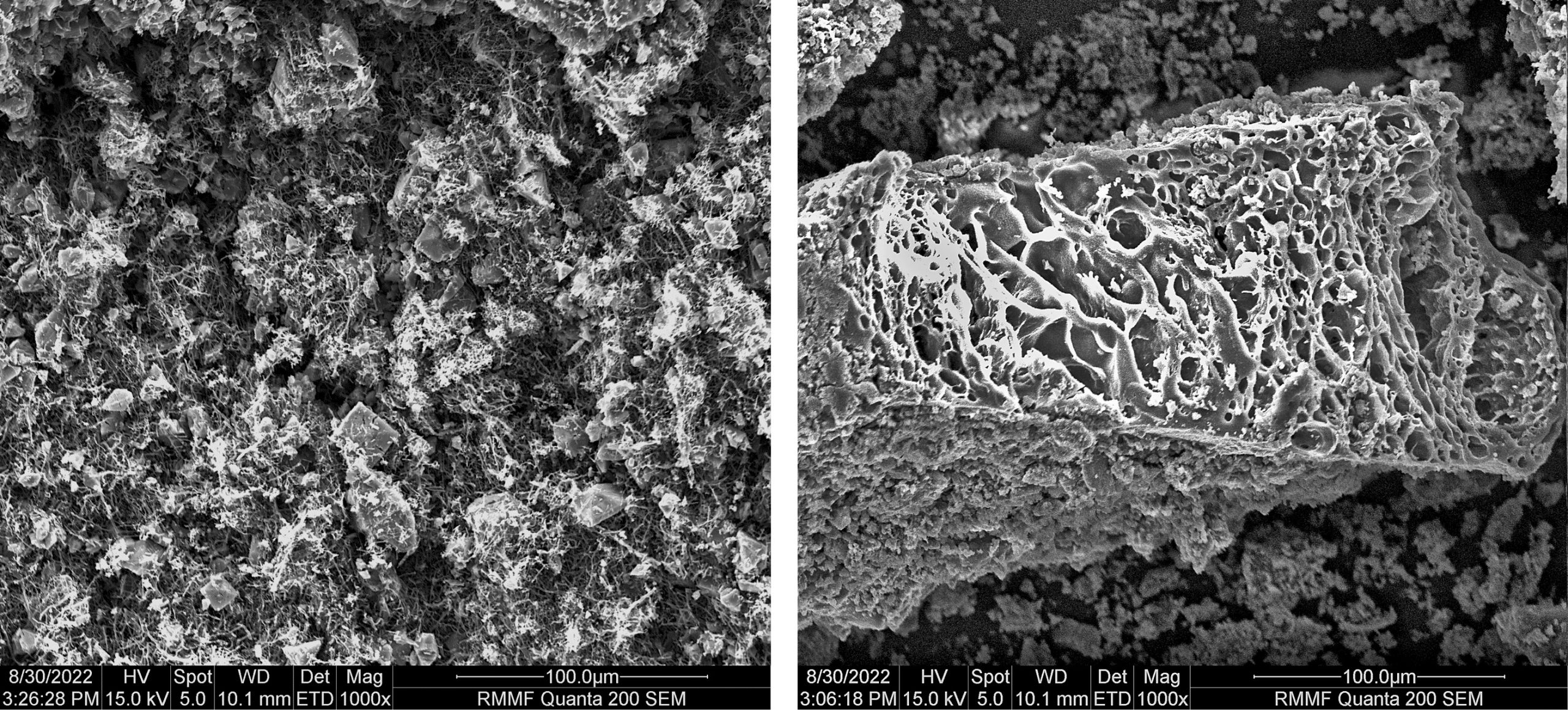A hot, dry climate and regular bushfires makes fireproofing a high priority in Australia. Historically, industries have relied on bromide- or chlorine-based chemical flame retardants to safeguard electronics, furniture, and building materials from fire. While effective, these chemicals have been linked to significant health risks. Even modern phosphorus and nitrogen-based flame retardants have been linked to issues with bone and brain development. A safe, non-toxic solution is needed.
In response to this, researchers at RMIT, led by A/Prof. Everson Kandare and A/Prof. Tien Huynh, are harnessing the properties of mycelium – a fine network of filaments that acts like a root system for fungi. The cell walls of these filaments are made of a polymer called chitin. When exposed to intense heat or fire, the chitin chars to form a protective layer similar to wood charcoal. This layer acts as a shield, protecting the underlying material from heat, preventing combustion. The team found that they could increase the amount of char produced, and improve the thermal insulation provided by the mycelium by treating it with an alkaline substance.

Control (unmodified) mycelium char (left) and deacetylated mycelium char (right). The control char is powdery compared to the char from the treated mycelium which is highly consolidated and has a microporous structure. Scanning electron microscope images taken by the team at RMMF.
Scanning electron microscopy at Microscopy Australia’s RMIT linked lab, RMMF, was used to better understand both the alkaline treatment and the charring process. The team then developed a method to grow the mycelium in paper-thin sheets without soil so it can be engineered for different uses – from flat panels for fire proofing buildings to a leather-like material for the fashion industry and furnishings.
The researchers are now looking to reinforce the fungal mats with engineering fibres to delay ignition, reduce the flaming intensity and improve fire safety ranking. This research provides a pathway to safer and more sustainable fireproofing alternative for Australia with potential to export worldwide.

The research team Nattanan (Becky) Chulikavit (left), Associate Professor Tien Huynh (middle) and Associate Professor Everson Kandare (right) in their lab at RMIT’s Bundoora campus. Credit: RMIT
N. Chulikavit et al., 2023, Polymer Degradation and Stability DOI: 10.1016/j.polymdegradstab.2023.110419
Chulikavit shows off the compressed mycelium sheets she created for the project. Credit: RMIT
August 18, 2023